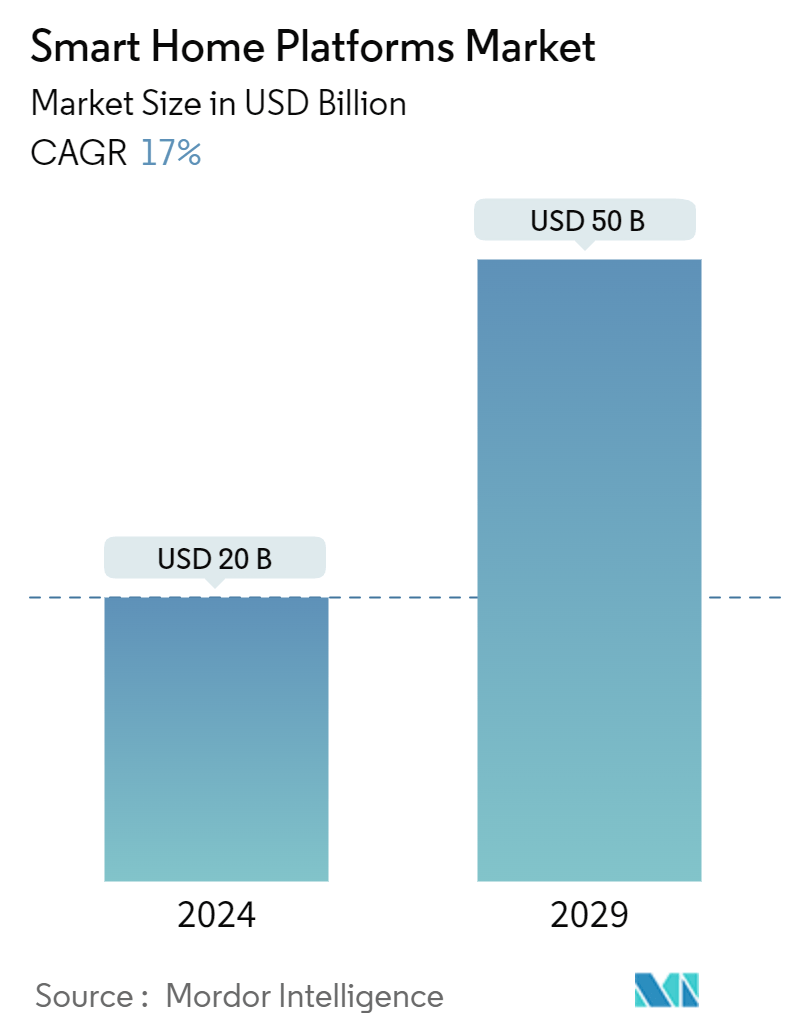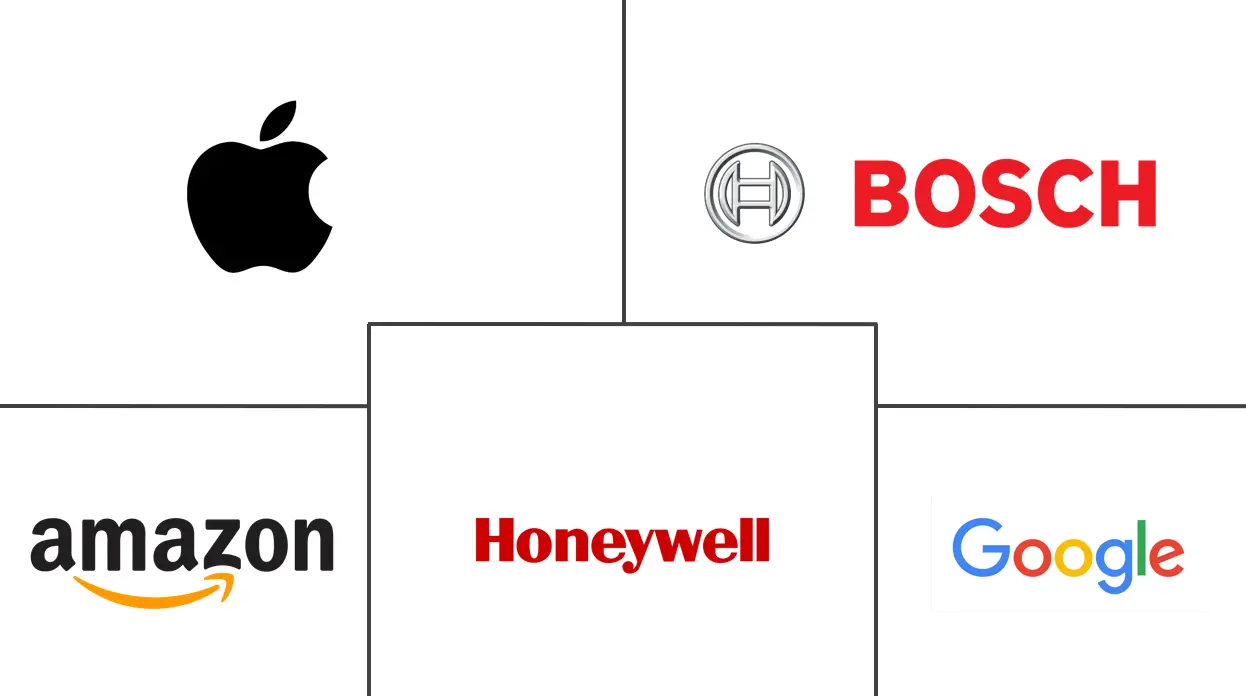
| Study Period | 2019 - 2029 |
| Market Size (2024) | USD 20 Billion |
| Market Size (2029) | USD 50 Billion |
| CAGR (2024 - 2029) | 17.00 % |
| Fastest Growing Market | Asia Pacific |
| Largest Market | North America |
| Market Concentration | Low |
Major Players
*Disclaimer: Major Players sorted in no particular order |
Smart Home Platforms Market Analysis
The Smart Home Platforms Market size is estimated at USD 20 billion in 2024, and is expected to reach USD 50 billion by 2029, growing at a CAGR of 17% during the forecast period (2024-2029).
- As consumers increasingly seek control over their living spaces, the adoption of smart home technologies is on the rise. Devices like smart thermostats, lights, locks, and security systems are becoming commonplace. While individuals under 35 are leading the charge in adopting these technologies, there is an anticipated uptick in adoption among older demographics as smart home tech becomes ubiquitous.
- Smart home platforms are weaving in artificial intelligence (AI) and machine learning, enhancing their offerings with personalized and predictive features. These advancements allow devices to adapt to user preferences autonomously. Notably, Google is embedding its proprietary AI into its smart home solutions. In August 2024, Google unveiled a significant revamp of its smart home platform, spotlighting the integration of its Gemini suite of generative AI models.
- With the rise of smart home devices, cybersecurity concerns have surged. In response, companies are channeling significant resources into fortifying security measures to safeguard user data and privacy. New cybersecurity standards are being crafted to bolster these efforts, including a product labeling system for enhanced gadget security. A notable initiative is underway by the Connectivity Standards Alliance (CSA).
- The CSA’s IoT Device Security Specification serves as a foundational cybersecurity standard and certification program. Its goal is to establish a unified, globally acknowledged security certification for consumer IoT devices. Manufacturers who comply with this specification and complete the certification can proudly display the CSA’s Product Security Verified (PSV) Mark. Echoing this sentiment, the FCC greenlit its own cybersecurity labeling initiative for consumer IoT devices in the United States with a March 2024 approval.
- Voice assistants such as Google Assistant, Amazon Alexa, and Apple's Siri are becoming increasingly prevalent, allowing users to engage with their smart home systems using natural language. Companies are heavily investing in research and development to boost the adoption of voice technology, aiming to make these voice assistants more human-like. In September 2023, Amazon showcased its advancements during a product launch, revealing that its Alexa voice assistant boasted intuitive decision-making capabilities, mimicking natural conversation.
- Companies are building holistic ecosystems, merging diverse smart home devices into a singular platform. This cohesive integration not only streamlines user interactions but also amplifies the capabilities of each device. Noteworthy strides have been made toward achieving interoperability among devices from different manufacturers. Protocols and standards like Z-Wave, Zigbee, and Matter are pivotal in ensuring seamless collaboration between devices. Matter stands out as an open-source protocol, allowing diverse devices to be managed across multiple brand platforms.
- Despite the advancements, the market grapples with challenges like security vulnerabilities, privacy issues, and the intricacies of device integration across various manufacturers. It is paramount to fortify security measures and alleviate consumer apprehensions regarding data privacy. Emerging markets where smart home technology is just beginning to take root present vast growth opportunities. Furthermore, as technology evolves and consumer awareness heightens, fresh prospects for product innovation and market growth are surfacing.


